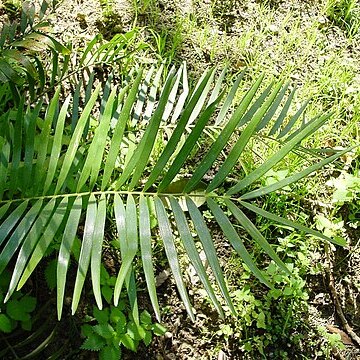Stem subterranean, or leaf-bearing apex exposed. Leaves 2--10 dm; petiole unarmed; leaflets 6--17 cm × 2--18 mm, linear, often twisted, very stiff, dark glossy green, 7--23-veined; margins often revolute, entire or with small teeth to slight denticulations near apex. Pollen cones generally 2--5 per plant, narrowly cylindric, 5--16 cm, tapering slightly at apex. Seed cones cylindric-ellipsoid, 5--19 cm, blunt at apex; ovules 2 per sporophyll. Seeds drupelike, oblong to ovoid, somewhat angular, 1.5--2 cm, outer coat bright orange. 2 n = 16.


